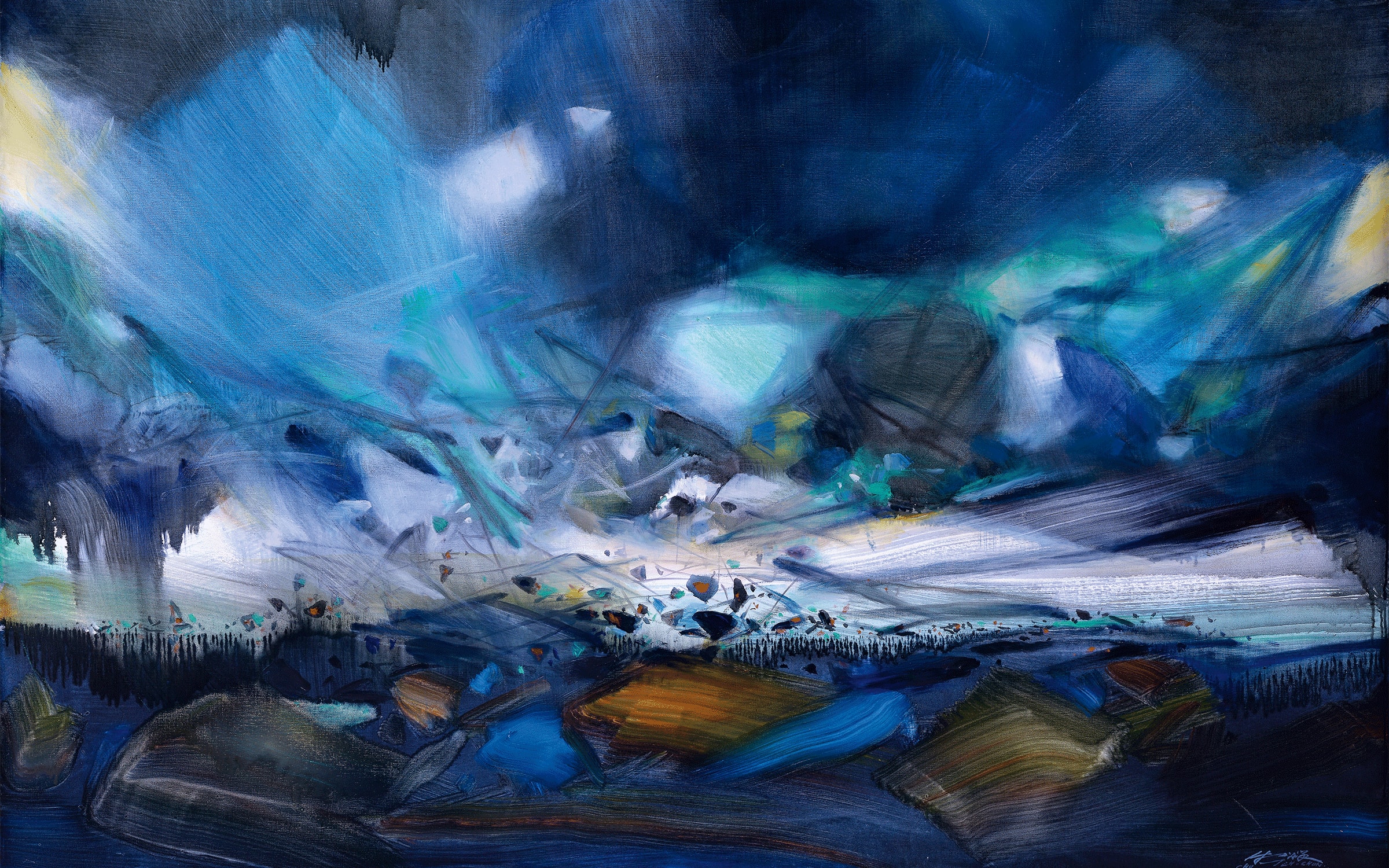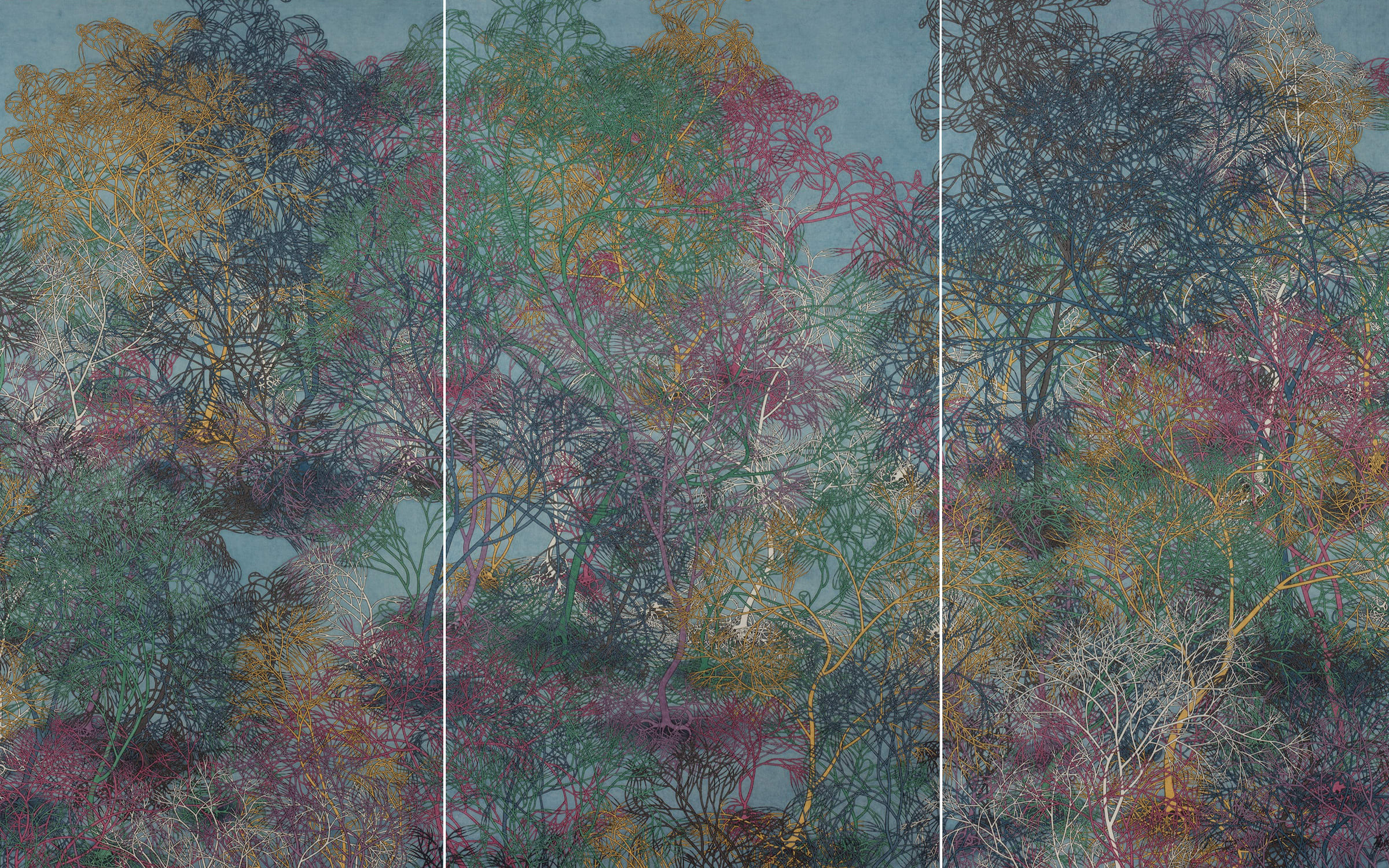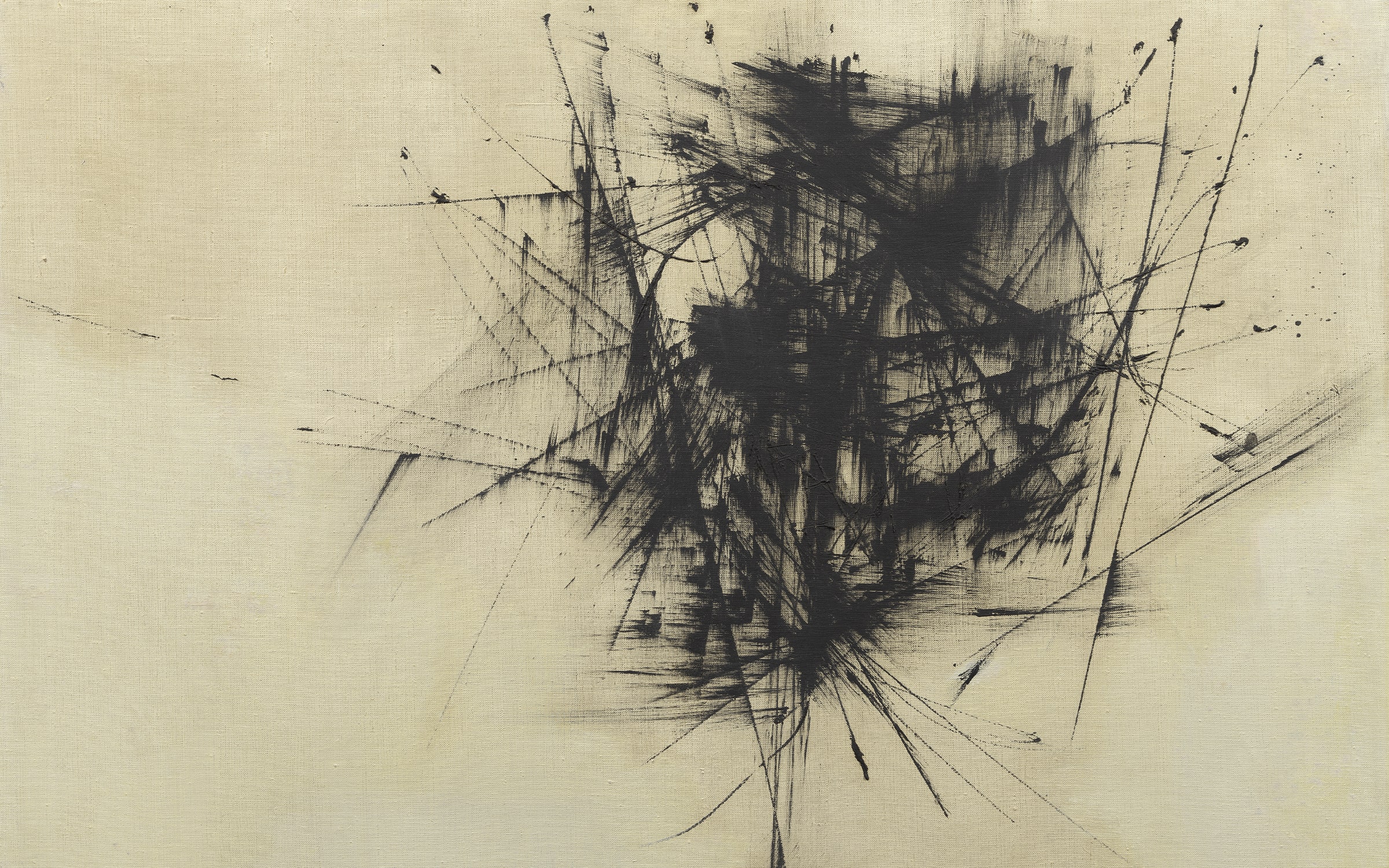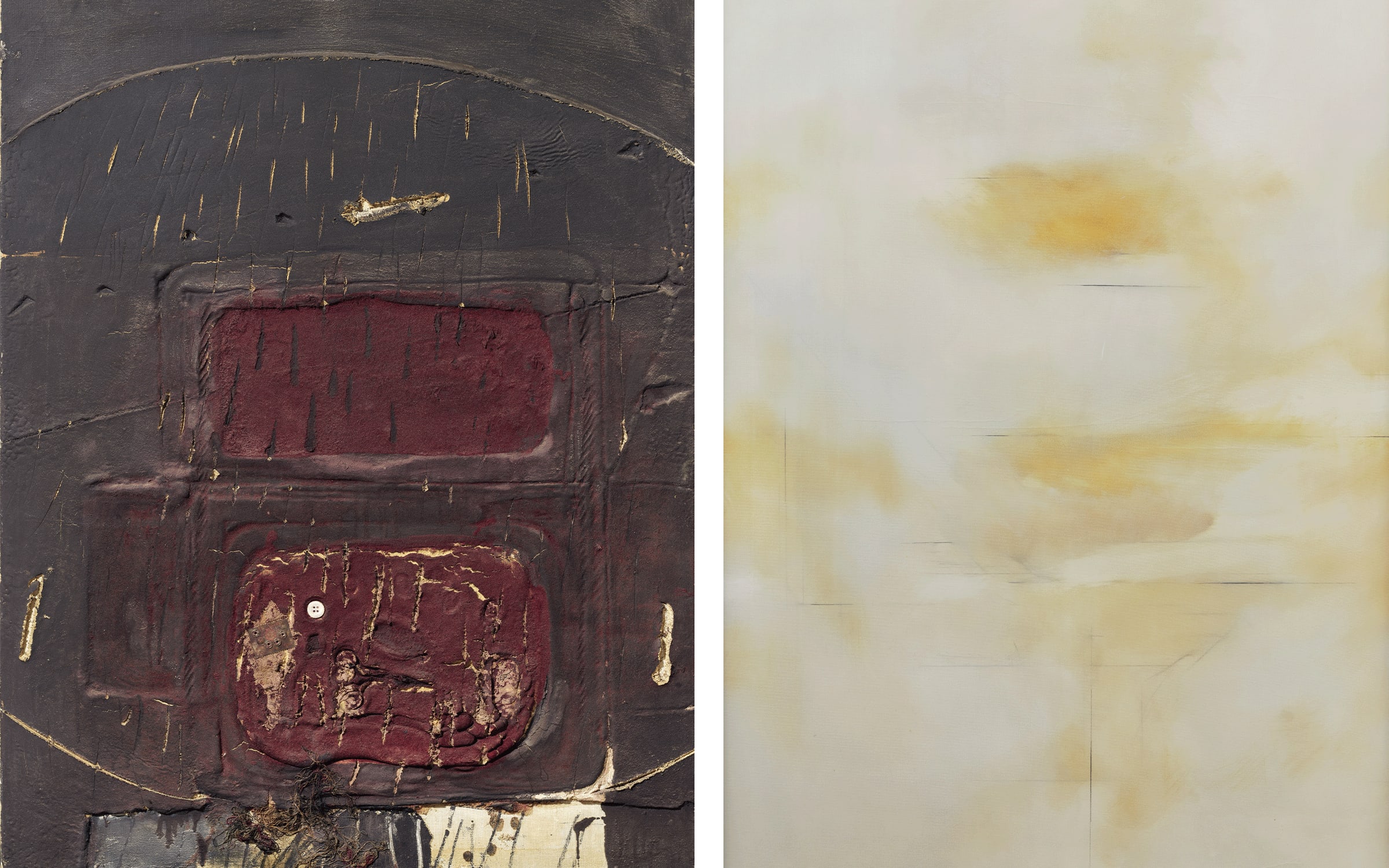East and West have always been more than two delineated poles along one defined axis. There are multiple ‘Easts’ and ‘Wests’ that exist in relative terms: your East could be my West. It is the practices of translation and recasting, rather than geographical locations, that define the dynamic cultural exchanges across Eurasia.

Let’s consider a metaphorical ‘center.’ One of the key agents for spreading Buddhism was the Kushan Empire, formed by nomadic people originally from the steppes, who settled in the southern part of Central Asia and the northern part of the Indian subcontinent – a nodal point between the Roman Empire, Mesopotamia, Persia, India and China. Early practitioners of the philosophy collected and communicated with descriptions, sketches, and cult images carved onto stone, clay, wood, and bronze, sometimes in the form of coins and ornaments. Since the material always contaminates the form as an image gets transmitted, there is only the ‘succession of forms’ or, rather, ‘the form of a continuous development.’¹ Those itinerant paths of people and materials shape imaginations are the focus of certain galleries showing at this year’s Art Basel Hong Kong.
Beijing- and New York-based INKstudio, for instance, engages with deep-space, deep-time transcultural dialogues on the gongbi (meticulous brush) painting technique. Originating in China and disseminated along the Silk Road via Buddhist mural paintings, gongbi was perfected and evolved into the Imperial painting style of the Tang and Song dynasties, reflecting a heightened differentiation in brightness and spareness of composition. The tradition influenced Korean, Japanese, and Tibetan religious painting before returning to its birthplace in the form of miniature painting via the exchange between the courts of the Yuan dynasty and the Mongol empire. Contemporary Chinese artist Lao Tongli works with the early gongbi tradition, characterized by the tightness and strength of its brushstrokes, in his incredibly dense ink paintings, which evoke a forest canopy, perhaps, or the venous system. His series ‘Above the Horizon Sky’ (2018–present), for instance, features dynamic compositions that can be traced back to monumental shan shui (mountain water) landscape paintings, invoking metaphysical entanglements between man, nature, and technology.

Ethan Su Huang-Sheng also deftly engages with the gongbi tradition in his candid and poetic depictions of everyday life, which map the imagery familiar to digital natives onto elements of East Asian landscape painting. Boxing (2019), for instance, presents a detailed freeze-frame of a punch being thrown in a boxing match that allows the viewer to follow a mass of arm muscles, which extends almost the full width of a 2.5 meter painting scroll, as if it were a mountain range. Tseng Chien-Ying’s ink paintings – or works ‘in the oriental medium and material’ as the artist prefers to call them – convey the unspoken social pressures of contemporary life through meticulously detailed facial expressions, stylized bodies, and the rendering of ornamental environments, which all carry echoes of the Buddhist mural paintings in the Mogao Caves of Dunhuang that inspired the artist.
Liang Gallery offers a fresh perspective on the pioneering Taiwanese painters Chen Cheng-Po, Chu Teh-Chun and Shiy De-Jinn, whose practices in oil and ink were characterized by constant experimentation, blending their own sensibilities with exogenous methodologies. Trained in China and Japan, and active in the mid-to-late 20th century, these artists were influenced by Western painting while navigating their own artistic traditions and aesthetic sensibilities. Their itinerant paths reflected the broader history of the time. Chu studied at the National School of Fine Arts in Hangzhou during the 1930s, under the French-trained painting pioneers Wu Dayu and Fang Ganmin, before moving to Taiwan in 1949 and emigrating to France in 1955. Cheng studied oil painting in Japan during the 1920s and, following a stint working in Shanghai, practiced in Taiwan until his tragic death in 1947. Known for his vivid depictions of the Taiwanese landscape, Cheng is remembered as the father of Modern art in Taiwan.

Shiy moved to Taipei in 1952 and, soon after, started absorbing the landscape and culture of Taiwan into his paintings. At the time, geopolitical tensions had made art a tacit medium of protest, with both Taiwan and mainland China, for instance, sending works to the São Paulo Biennial as China’s sole representative. After viewing the Taiwanese entries to the 1957 biennial – to which he had submitted his oil on canvas The Goose Seller (1956) –Shiy felt ‘ashamed’ of the quality of contemporary Taiwanese art and worried about the development of styles in the region versus the more distinctive aesthetic qualities of artworks and artefacts from mainland China. Experimental in his ink paintings, Shiy captured the light and the lush, gentle landscape of Taiwan with great sensitivity and, drawing from his personal and political life, developed a body of oil-on-canvas works that subtly explored his queer identity through tender portraits of young men.

After viewing Taiwan’s official selection for the International Youth Art Exhibition in Paris in 1959, Chu expressed similar concerns regarding the development of art in the region. He likewise identified the need to distinguish Taiwanese contemporary art from that of mainland China and subsequently promoted freeform abstract painting – although, like Shiy, Chu’s own artistic response transcended the mere abstract/realist divide².
Tracing a similar historical impulse, Galeria Mayoral’s project for Art Basel Hong Kong is dedicated to the influence of Asian culture on Spanish artists from 1959 to the present day. Characteristic of an abstract idiom featuring the strong calligraphic use of black paint, which was used to fiercely oppose Francisco Franco’s dictatorship in Spain (1939–75), Fernando Zóbel’s monochromatic painting Celina (1959) engages viewers with its long, thin, controlled lines. The artist achieved this effect by applying oil paint to the canvas with a syringe, in ‘an emotional improvisation’, to use his own words. Inspired by Chinese and Japanese art and calligraphy, Zóbel – who was born in the Philippines to a Spanish family – discovered abstract painting, most notably the works of Mark Rothko, while studying in the US in the 1950s. Seeking to intertwine the various artistic styles and histories that inspired him, Zóbel was a rare example of artistic cosmopolitanism spanning three continents.
Also included in Mayoral’s presentation is work by Antoni Tàpies, which underscores the dynamic exchanges that have long taken place between art and philosophy from East and West. When the frontiers of Spain were all but closed during Franco’s dictatorship, Tàpies – an avid reader – found his spiritual home in Zen Buddhism and the teachings of the Hindu Vedas. The Buddhist concept of emptiness finds particular resonance in his works of Abstract Expressionism as a physical manifestation of unconscious actions enacted on canvas that represent the search for a higher understanding of things. As with all of these artists, what we witness in Tàpies’s practice is a process of translation and recasting – through observations of history, philosophy, and art history – as well as ceaseless experimentation. Together, they offer a glimpse into the transnational and transhistorical currents in Modern and contemporary painting across Eurasia.
1. Deleuze, Gilles. Guattari, Felix. Massumi, Brian (tr.). A Thousand Plateaus. Minneapolis: University of Minnesota Press, 1987, p 411.
2. See Chiang Po-Shin, Combine and Install the ‘New Painting’: Taiwanese Art at the São Paulo Biennial (195 –1973), Tainan: Taiwan Visual Art Archive, 2020.
Art Basel Hong Kong 2023 will take place from March 23 to 25 at the Hong Kong Convention & Exhibition Centre.
Mi You is Professor of Art and Economies at University of Kassel /documenta Institut.
Published on February 10, 2023.
Caption for full-bleed images, from top to bottom: 1. Kang Chunhui, Sumeru No.12, 2022. Courtesy of the artist and INK Studio. 2. Tseng Chien-ying, Instanimals, 2020. Courtesy of the artist and INK Studio. 3. Chen Cheng-po, Tamsui Scenery, 1935. Courtesy of the artist’s estate. 4. Fernando Zóbel, Fútbol 9, 1973. Courtesy of Iñigo Muguiro y Miranda Collection, and Galeria Mayoral.